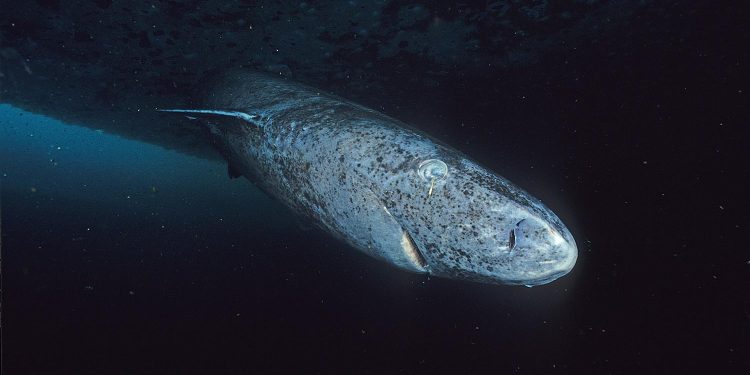For as long as humans have been around, the quest for longer life has remained an elusive dream. While we may get close to 100 years if we’re lucky, some animals, like tortoises and whales, surpass us by centuries. Yet, the Greenland shark, a deep-sea marvel, leaves all other vertebrates far behind, boasting an incredible lifespan of nearly 400 years. What could possibly allow this ancient creature to live for so long?
In a groundbreaking study, a team of international scientists sought to uncover the genetic secrets behind the Greenland shark’s exceptional longevity. By sequencing its genome, they hoped to better understand the physiological traits that allow these sharks to defy time in a way that no other vertebrate can.
Unlocking the Greenland Shark’s Genetic Code
The study was no small feat. The genome of the Greenland shark is twice as long as that of a human. Even more intriguing is the fact that 70% of the genome consists of what scientists call “jumping” genes—segments of DNA that can move around within the genome. Usually, these genes are considered to be little more than genetic clutter, sometimes even harmful. But in the case of the Greenland shark, they seem to serve a protective function.
The researchers speculate that the shark’s evolution has managed to counteract the negative impact of these “jumping” genes. Instead of causing genetic instability, as they often do in other species, the Greenland shark’s genome appears to have harnessed these elements to strengthen its ability to repair DNA damage. This insight could hold the key to understanding how these sharks are able to live for centuries while maintaining their health.
DNA Repair: A Lifesaving Mechanism
DNA repair is crucial for any organism’s survival. Every day, human cells sustain damage, but specialized mechanisms within our DNA repair these injuries to keep us healthy. In long-lived animals, like the Greenland shark, these repair systems are thought to be particularly effective, allowing them to fix damaged DNA more efficiently than most species.
One of the standout discoveries in the study involved the protein p53, often referred to as the “guardian of the genome.” In humans, mutations in p53 are found in about half of all cancers, making it an essential player in genome stability. The Greenland shark’s version of p53, however, is unique. It has an additional amino acid compared to most other animals, which could play a role in its remarkable resistance to age-related diseases.
Although much of the Greenland shark’s genome remains to be fully analyzed, the research team is eager to continue exploring its many mysteries. They believe that by studying these sharks and their genes, they can unlock new perspectives on aging not only for this species but for life in general. This could even pave the way for breakthroughs in human health and longevity.











